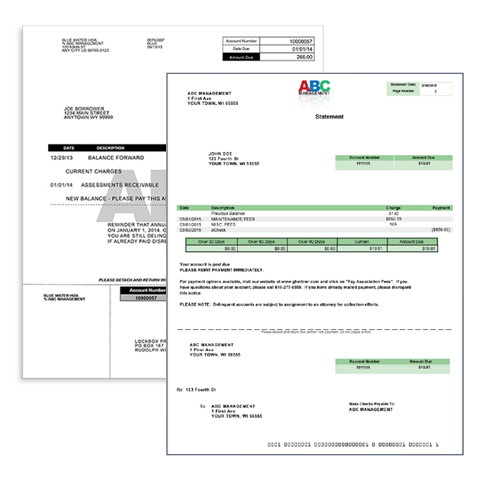
What's the difference between standard and ready-to-print statements?

Thursday, Oct 6, 2016
Considering outsourcing your statements? Outsourcing statements saves time and energy. After all, a company is printing, folding, stuffing, apply postage, and mailing your statements for you! Uploading the information required is an easy process, reducing the headache associated with monthly billings.
There are two major types of statements available: standard and ready-to-print. It’s valuable to know which type of statement best fits your software and needs if you are considering outsourcing. The following compares the two types of statements so you can make an informed decision.
Standard Billing Statements
Standard statement printing has set locations for each imprint specification. For example, the return address, logo, and name and address of the payee will always be found in the same location. The statement body offers some flexibility, such as having the ability to choose which phrasing is used and the exact location of required information. Just upload a data file (comma separated or excel files) to a site and place the order!
Ready-to-Print Statements
Ready-to-print statements are designed by the individual or company. Instead of uploading basic information to a site, the purchaser uploads a pre-merged statement file containing address information. This allows for more customization compared to a standard statement. Additionally, ready-to-print statements can be printed in color and can be printed on color paper.
Overall, a standard statement takes your information and places it in pre-determined spots. A ready-to-print statement is totally designed by you, so the location of the information and the content is all determined by you!



